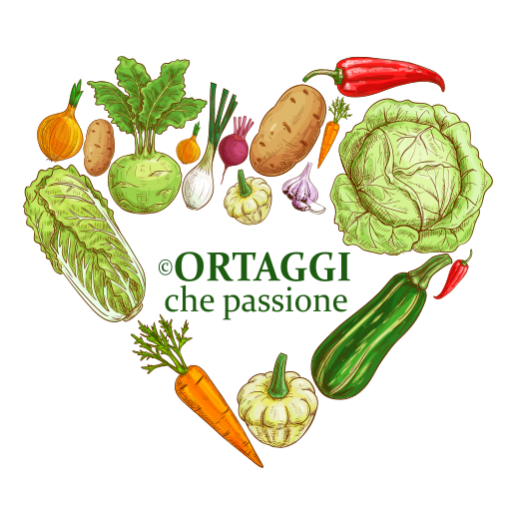Stir-fried Noodles with Vegetables is a simple and quick recipe to cook this type of pasta. I used two vegetables that are in season all year round: white cabbage and carrots, but you can prepare them with many other vegetables, such as: broccoli, red cabbage, Chinese cabbage, onion, spring onions, daikon, fennel, friggitelli, mushrooms, bamboo shoots, soybean sprouts, pak choi, peppers, leeks, red radicchio, arugula, Jerusalem artichoke, savoy cabbage, pumpkin, zucchini.
SEASONALITY of #cabbage – all year, mainly spring and fall. #Carrots are available all year round.
RECIPES with an oriental flavor
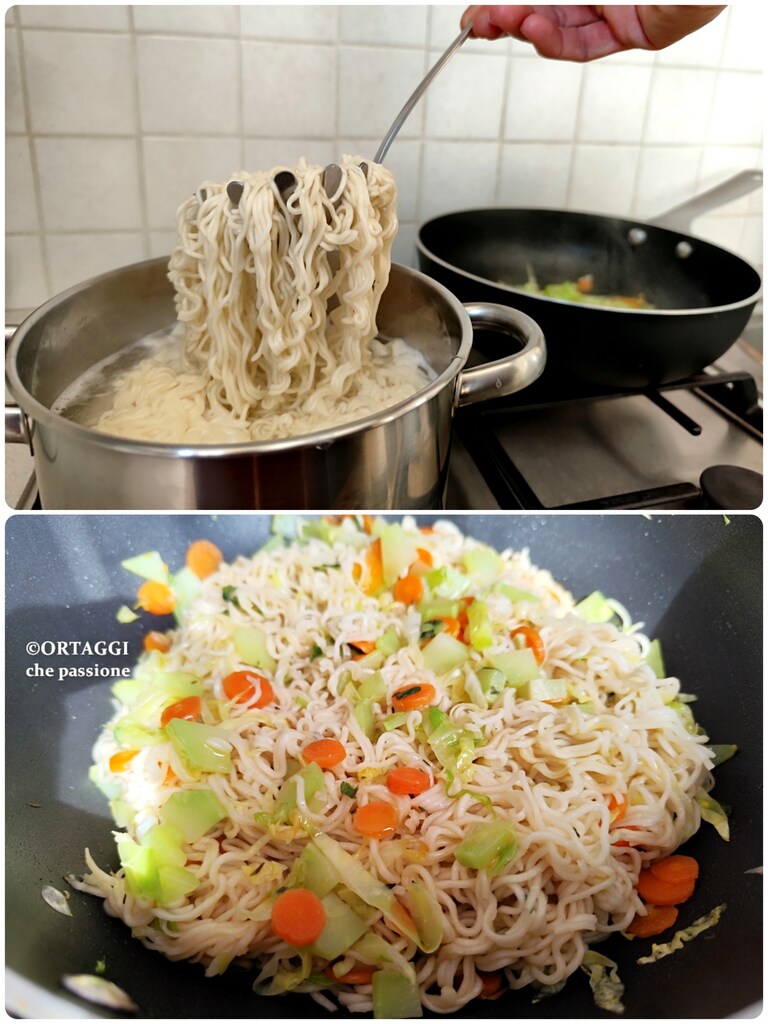
- Difficulty: Easy
- Cost: Cheap
- Preparation time: 15 Minutes
- Portions: 4
- Cooking methods: Stovetop
- Cuisine: Japanese
- Seasonality: All seasons
- Energy 129.76 (Kcal)
- Carbohydrates 20.07 (g) of which sugars 2.37 (g)
- Proteins 4.29 (g)
- Fat 3.95 (g) of which saturated 0.71 (g)of which unsaturated 2.72 (g)
- Fibers 2.33 (g)
- Sodium 947.38 (mg)
Indicative values for a portion of 200 g processed in an automated way starting from the nutritional information available on the CREA* and FoodData Central** databases. It is not food and / or nutritional advice.
* CREATES Food and Nutrition Research Center: https://www.crea.gov.it/alimenti-e-nutrizione https://www.alimentinutrizione.it ** U.S. Department of Agriculture, Agricultural Research Service. FoodData Central, 2019. https://fdc.nal.usda.gov
Stir-fried Noodles with Vegetables
- 3.53 oz cabbage (about 3.5 oz)
- 1 carrot (about 1.76 oz)
- 2.82 oz broccoli (inner stalk – alternatively another carrot)
- 1 tbsp peanut oil
- to taste water
- to taste coarse salt
- 8.82 oz noodles
- 2 tbsps soy sauce (about 0.71 oz – alternatively salt the vegetables)
- to taste arugula (a few leaves)
- to taste curry (or ginger)
Tools
- Cutting Board
- Knife smooth blade
- Pot high non-stick
Stir-fried Noodles with Vegetables
PREPARE the vegetables
Wash and cut the preferred vegetables into regular pieces. Then, cook them with a drizzle of oil in the pan (wok or non-stick), if necessary, add some of the noodles’ cooking water.
Note: salt only if not using soy sauce.
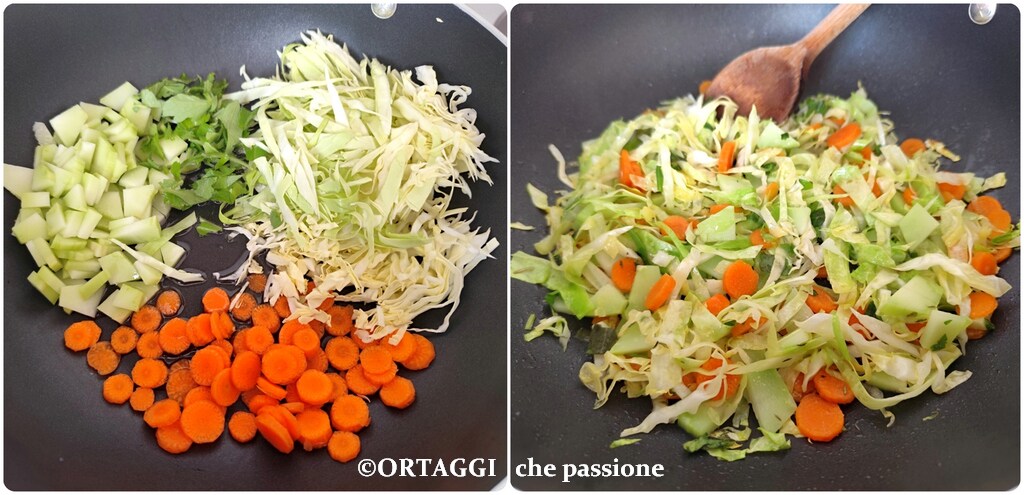
COOK the noodles
Meanwhile, cook the noodles in plenty of salted boiling water.
Note: for optimal cooking, follow the package instructions.
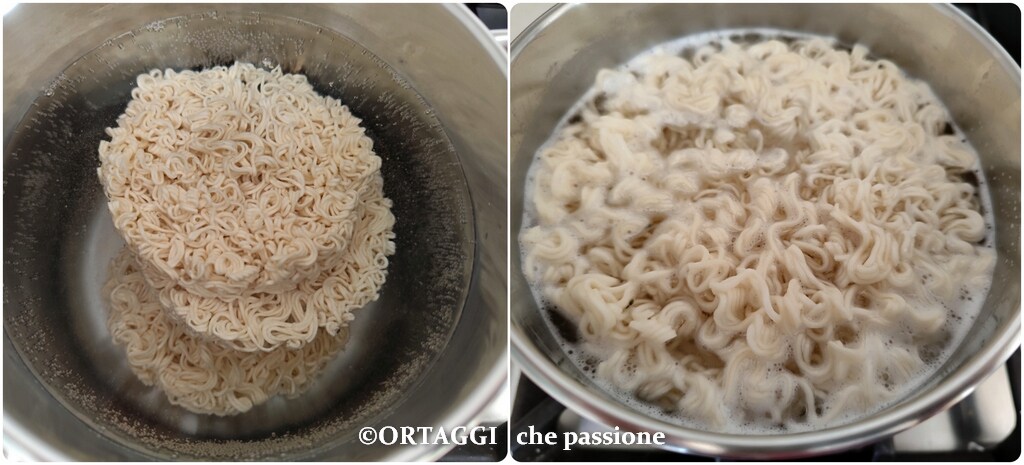
STIR-FRY the vegetables with the noodles
When the noodles are ready, add them to the vegetables, season with soy sauce (and if desired, also curry or ginger).
Lastly, stir-fry everything for a few minutes, mixing well to combine all the flavors. If necessary, add some of the pasta’s cooking water.
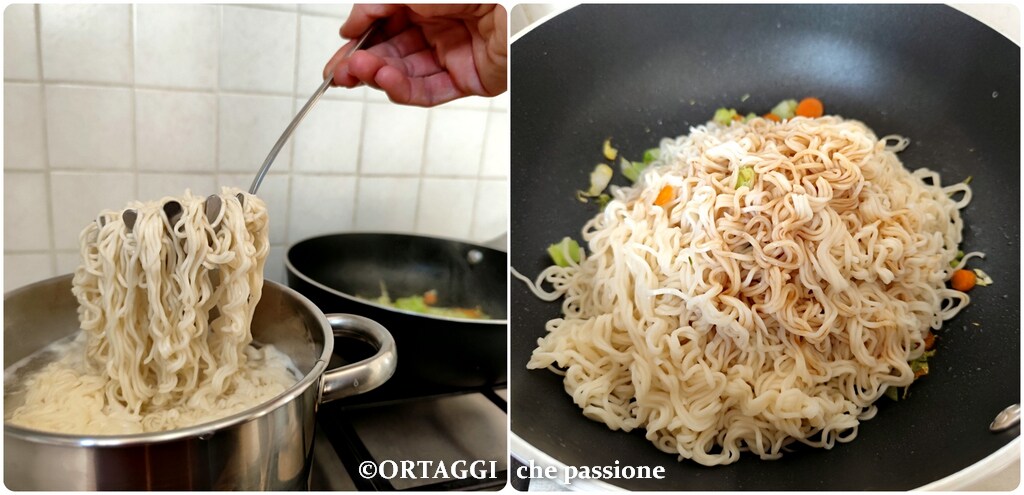
How to store Stir-fried Noodles with Vegetables
Store the stir-fried noodles with vegetables in an airtight container in the fridge for up to 3 days. Reheat in a pan or microwave before consuming.
VARIANTS
VEGETARIAN
At the end of cooking, add scrambled eggs cooked separately.
with FISH
Generally used: shrimp or prawns, salmon, tuna, or white fish (sea bass, grouper, dentex, cod, hake, sea bream, sole, plaice).
with MEAT
Typically used: pork, beef, chicken, or duck.
HOW TO SEASON NOODLES?
Here are some vegan ideas on how to season noodles to create delicious and varied dishes:
– Soy sauce and garlic: a classic and simple combination that adds a salty flavor and a hint of garlic to the noodles. Just mix soy sauce with minced garlic and pour it over the cooked noodles.
– Basil pesto: a fresh and aromatic option, basil pesto can be mixed with the noodles for a Mediterranean flavor. You can also add chopped cherry tomatoes for a touch of color and sweetness.
– Sesame oil and sesame seeds: toasted sesame oil and sesame seeds can be used to give noodles a slightly toasted flavor and a bit of crunch.
– Chili sauce: if you like spicy food, chili sauce can be a great choice. You can adjust the amount of chili according to your level of tolerance to spiciness.
– Peanut sauce: a creamy peanut sauce can be a tasty alternative to season noodles. You can prepare it by mixing peanut butter, soy sauce, rice vinegar, sugar, and a bit of water to reach the desired consistency.
– Vegetable broth: for a more moist and flavorful dish, you can serve the noodles in a warm broth. Add some herbs like cilantro or scallions for a final touch.What is the difference between noodles and spaghetti?
Spaghetti is a type of Italian pasta made from durum wheat semolina, while noodles are Asian and can be made from durum wheat, but are usually made from rice flour, buckwheat, mung bean, corn, or seaweed; and there are also egg-based ones.
Spaghetti is thin and elongated, while noodles, also known as Chinese or Japanese spaghetti, have a similar shape but can vary in size and ingredients.What are the best types of noodles?
Among the various types of noodles, many consider ramen (usually made with wheat and eggs) the tastiest for their rich broth and various combinations of ingredients. Japanese udon noodles are appreciated for their soft and chewy texture, while soba noodles are praised for their buckwheat flavor and slightly rustic texture. Rice noodles are often used in fresh and crispy dishes like pad thai. Soybean noodles are notable for their elastic texture and neutral taste, perfect for absorbing the flavors of sauces. The choice of the “best noodle” therefore depends on the type of dish and personal taste.

